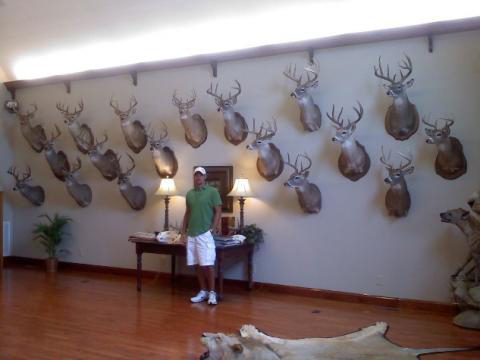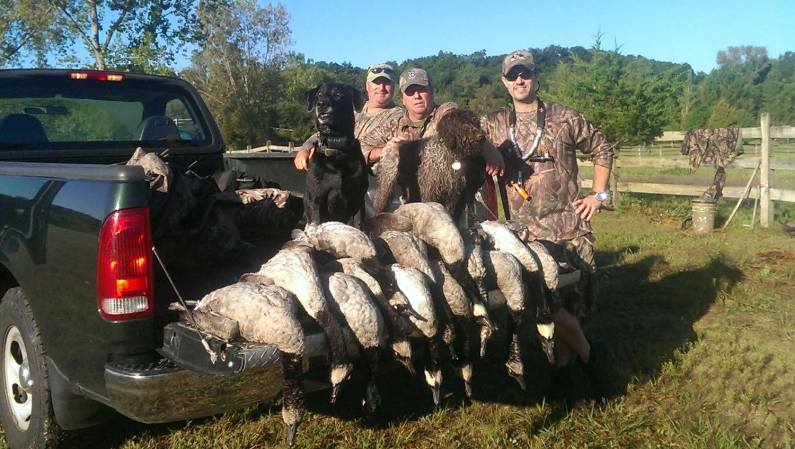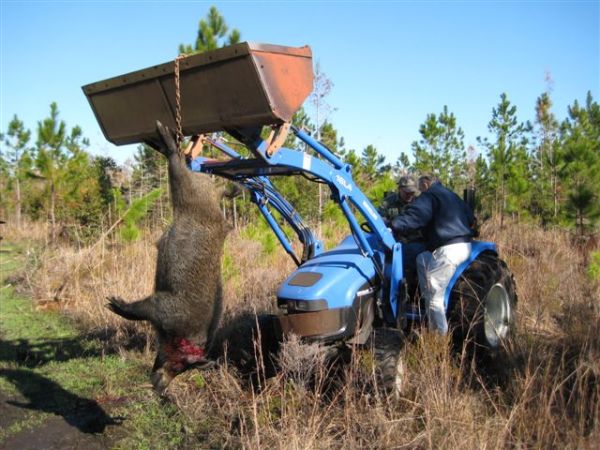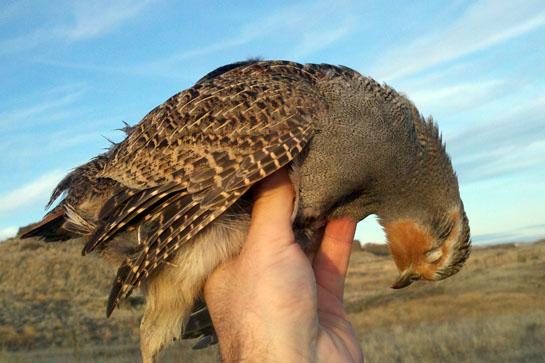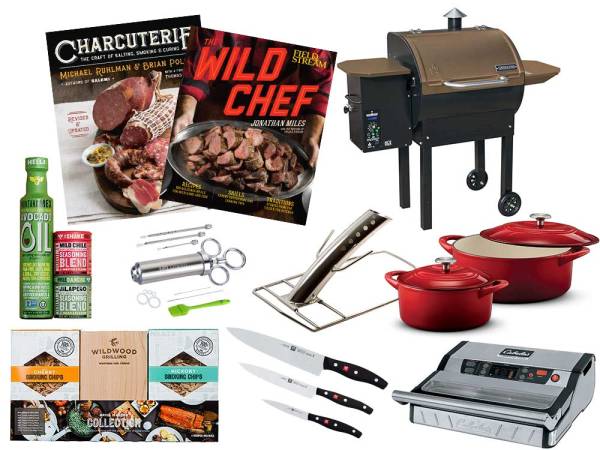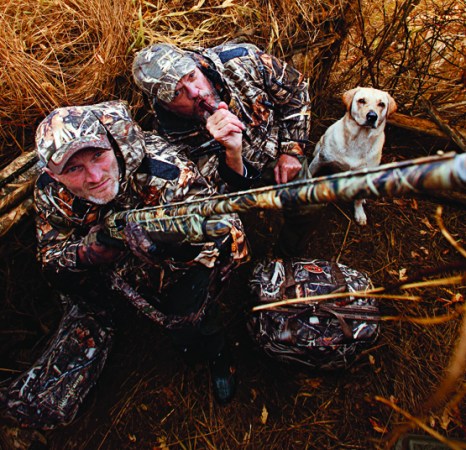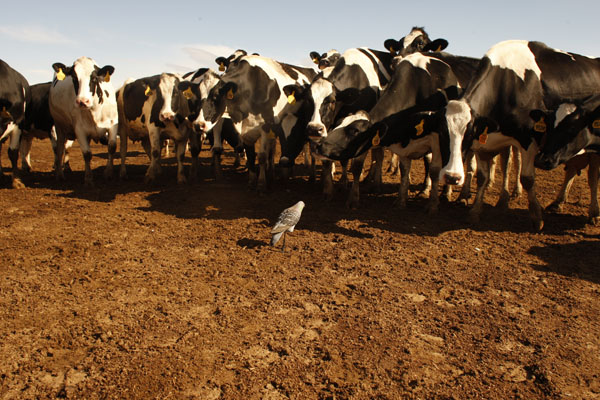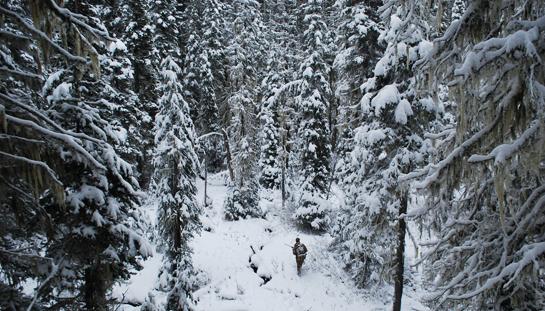
HUNTING STRATEGIES
1) GO EXTRA SLOW
When still-hunting, most of us don’t move slowly enough, or stay put long enough. Try using your watch as a guide. Decide on a period of time to stand still, such as five minutes. This way you’ll be forced to remain quiet and silent for a minimum amount of time, longer if necessary.
2) STOP AT THE NOISE
Here’s a saying I came up with to remind me of an animal’s terrific senses. “The sound of a snapped twig is quickly forgotten by the hunter, but long remembered by the quarry.” If you make an unusually loud noise, stop and stand there as long as you can if you suspect animals are close by. A deer might stand a long time and stare in your direction. If it doesn’t see or smell you, it might go back to feeding or whatever else it was doing before it was disturbed.
3) QUICK-STEPPING FOR DEER
A deer is easily alerted to human cadence as we walk through noisy leaves. This might sound like a dumb idea, but try taking quick steps in a short sprint for 10 to 20 yards or so. Stop, and do it again. Keep your footfalls as light as possible; you’ll be surprised at how much you sound like a squirrel scrambling through the leaves.
4) DESIGN A BETTER DRIVE
When putting a drive together, we tend to place standers in front of and alongside the area being driven. If you have enough people in your party, position a stander in the rear where the drive originated. Deer will often wait for hunters to pass and then sneak back and run off in the opposite direction.
5) DRIVE SOLO
Try a one-man drive if you’re hunting alone. Purposely walk into an area with the wind at your back. The idea is to stir deer up and get them moving. Once you’ve passed through, make a circle and do it again. You might see confused deer creeping about, unsure of your location. If this doesn’t work, take a position on the flank of the area you walked through and wait an hour or two. You might see deer sneaking back in, believing the danger has passed. This works in dense thickets that deer use for security cover.
6) PICK YOUR LANDMARKS
When you plan to stalk an animal by making a big circle and coming up behind it, it’s easy to become confused as you change your location. Pick a distinctive object on the skyline that you can recognize from the back, such as a large tree, a fence line or a rock, to help guide you to the correct spot.
7) JUDGE THE QUARRY’S PACE
Also try to anticipate where the animal will be once you complete your stalk. Before starting, watch the quarry long enough to determine its direction and rate of travel if it’s actively feeding or walking. Pick your destination accordingly.
8) FOLLOW WITH CARE
If you’re tracking an animal, remember that the quarry will be alert to its back trail. A really fresh track requires you practically to still-hunt rather than merely follow, especially if the animal isn’t “lined out” but is taking bites of browse as it goes.
9) CLEAR SHOOTING LANES
When you first get into your tree stand, practice taking up shooting positions for all the directions from which an animal might appear. After doing that, try to remove branches in the line of fire if you can reach them, and take up the position that requires the least amount of movement for you to turn in any direction. Be sure your safety strap is secure and allows free movement.
10) SWEEP AWAY BLIND CLUTTER
If you’re sitting in a ground blind or standing next to a tree, sweep away leaves and brush with your boot so the area you’re in is clean of forest debris. This will eliminate unnecessary noise if you must make a move when an animal approaches.
11) GLASS AND RE-GLASS
When glassing with a binocular early in the morning, move to your vantage point in the dark. Glass likely spots, but don’t take just a single cursory look. From time to time, refocus your attention on places you’ve already checked out. The changing light might reveal animals you hadn’t seen before or animals that have moved out of deep brush or timber.
TRACKING
12 HOW TO FOLLOW A BLOOD TRAIL Move quietly as you track. Be alert for the quarry, which might be bedded just ahead. If other hunters are with you, communicate with hand signals. Mark every spot of blood with a piece of toilet tissue or flagging, which should be removed later.
13 DON’T GIVE UP Many times a good blood trail that you’ve followed a long way will peter out to nothing. That’s not a good sign, because the animal is still going strong, but it doesn’t mean it isn’t fatally wounded. Don’t give up. Start looking for tiny spots of blood. Get on your hands and knees, if necessary, to help keep you on the spoor.
14 CALL THE SPOT If you’re hunting in a brushy area and you drop an animal at a distance, make a mental note of where it stood at the shot, especially if you must take your eyes off it to get there. It’s vitally important to find the precise area so you can pick up the blood trail.
15 BEWARE OF THE ‘INSTANT DROP’ An animal that drops at the shot is more likely to run off than one that doesn’t go down but runs some distance and then falls. The animal that falls immediately might do so from shock, then recover and run. When an animal drops instantly, stay put and be prepared for a quick follow-up shot.
16 NO EYE POKES Television hunting-show hosts like to walk up to a fallen animal and prod it with the firearm muzzle to make sure it’s dead. That’s dumb. The last thing you want is for an animal to leap up when you’re so close that you can’t take action. Instead, toss a stone or branch at it and look for a reaction. If an animal’s eyes are closed, it’s probably still alive. If there is any sign of life, shoot it in the throat under the chin to administer a humane coup de grâce and not waste meat.
17 LOOK UP FOR BLOOD When tracking a wounded animal, don’t stay focused only on the ground. Look for blood higher up on the sides of trees, on grass heads, and on stems of brush. Sometimes we’re so intent at looking for traces on the forest floor that we completely miss clues off the ground.
THE COMPETITION
18 GETTING IN FIRST Many roads are blocked these days to restrict vehicle access, allowing only foot or horse traffic. Hunters commonly park at gates early in the morning and hike up roads. Beat everyone else by parking there at midnight. Carry a light sleeping bag and walk to the end of the road, where you’re apt to find a logged area. Since these spots are virtual smorgasbords for wildlife, position yourself at the back of the area in an elevated spot away from the road, using your flashlight sparingly. Once settled, take a nap and wait for other hunters to push deer to you as shooting hours approach, or look for unpressured deer feeding naturally.
19 BIG-GAME HONEY HOLES If you’re in big country and want to focus on the place where the odds are best of finding game, look no further than a deep, heavily timbered canyon with no roads or major trails to the bottom. Most hunters don’t descend into nasty spots because they know they’ll have to climb back out. The idea of hauling a deer or elk out of the bottom is a double nightmare that makes them even more prone to avoid these potentially game-rich spots.
20 DRIVE DOUBLE-DIPPING If you know of a drive being put on by another party of hunters, try taking a stand well away from the group in heavy cover where spooked deer might run. This is ethically acceptable if you keep a reasonable distance from the party and don’t interfere with the drive.
21 DON’T FOLLOW THE LEADER If you’re tracking a deer in snow and suddenly discover that another hunter has come upon the tracks and is in front of you, there’s obviously no sense in following. Instead, quickly make a big circle and try to ambush the deer. Chances are the other hunter will only keep pushing it ahead—maybe to you. Ethics require that you do this a considerable distance from where you think the hunter might be. I’d suggest at least a half mile or more.
STAYING WARM
22 SLEEP IN COMFORT A cot in an unheated tent or cabin will keep you cold all night if you don’t have a pad underneath your sleeping bag. If you have no pad, spread out clothing to insulate you from the cold air under the cot. The loft in your bag is compressed from the weight of your body, and offers little insulation when in contact with the thin fabric of a cot.
23 BRING YOUR BEST BAG Be sure you have your best sleeping bag along during a cold-weather hunt, even if you’re in a tent or cabin with a wood stove. The fire will go out during the night, and the temperature inside will almost equal the temperature outside. A lightweight summer bag is just for that—summer.
24 COLD-WEATHER HORSEMANSHIP Riding a horse in cold weather will chill you rapidly if you end up sitting for long periods of time. Warm up by walking the horse downhill. Not only will this get your blood moving, but it’s also good horsemanship to give the animal a break.
UPLAND GAME/WATERFOWL
25 DON’T SPOOK THE RINGNECKS Wild pheasants spook easily at the sounds of vehicles, dogs and voices. Most birds will start running or flying at the first sign of humans. Park as far as possible from where you expect to hunt and approach the area quietly.
26 DON’T SWEAT IT Perspiration is your greatest enemy on a cold day. Take every precaution to keep dry, even if it means stripping off layers of clothes as you walk in frigid temperatures to avoid sweating. If you sit for any length of time, working up a sweat beforehand will guarantee that you get chilled.
27 GLASSING FOR DUCKS When jump-shooting ducks along streams or potholes, use a good binocular to scan the area for distant ducks. Make your observation looking through brush, if possible. Ducks have keen eyesight and will fly off if they spot you.
28 TAKING DOWN GROUSE Ruffed grouse are masters at flying through thickets. Many hunters pass up shots if the birds aren’t in the clear. That’s a mistake. Never pass up a shot if you can see the blur of a grouse as it erupts through brush, but always be sure you know exactly where the other members of your hunting party are. If you continually pass up birds you might never get a shot.
SMALL-GAME CARE
29 BRING SOME SHEARS Carry game shears to cut off wings and legs of birds in the field. Be sure to leave evidence of sex or species of the bird if required by law. Dress the birds when you take a break and wrap them in cheesecloth to keep them clean, allowing air to circulate and cool the meat. Never put a warm bird in a plastic bag.
30 SKIN ‘EM ASAP Skin rabbits and squirrels as soon as possible. The skin peels easily when it’s warm. Some small game animals harbor fleas, which can carry diseases. If you get rid of the skin quickly, the fleas won’t have time to migrate off the carcass and onto you!
31 DON’T BREAST OUT TURKEY Turkey hunters often “breast” their birds, taking the breast meat and discarding the legs, thighs and wings. This is a mistake. The latter three parts make wonderful stew and soup. Simply cook them in a crock pot until the meat falls off the bones, and put the boned, diced meat in a pot with soup or stew ingredients. You’ll never throw away a wild turkey leg again.
32 MOO-VING IN FOR THE KILL If it’s a quiet day and you’re trying to approach ducks by crawling through thick reeds, the noise you make will invariably spook birds before you’re in range. If cattle are around, try this: Say “moo” loudly as you sneak, being as cowlike as possible. Don’t laugh— it works like a charm. Ducks will tolerate cows, but not you.
PACKING SMART
33 BAGGING YOUR GEAR On wet days, moisture will invariably find its way inside your day pack. Protect your gear by storing items in zip-top bags. Store similar items together, such as flashlights and batteries in one bag, fire starters and matches in another, etc.
34 BUILD A BETTER FIRE Fire starters are vital to getting a fire going. I use several kinds. One of the best is easy to make at home. Impregnate cotton balls thoroughly with petroleum jelly. About seven of them will fit in a 35mm film canister. Each will burn for about three minutes.
TRANSPORT AND STORAGE
35 GET THOSE SHOULDERS UP It’s far easier to drag a deer with its shoulders high off the ground. Pull it with a harness that fits snugly over your torso, moving the carcass short distances at a time. Don’t try an extended drag, since you might tire before getting the chore accomplished.
36 LOSE THE WEIGHT Bone out a moose or elk quarter before you move it. This will eliminate much of the weight. Wrap the meat in cheesecloth to keep it temporarily clean and to let air circulate. For longer periods of storage, toss the cheesecloth and put the meat in heavy-duty bags that can be laundered.
37 HANG ‘EM HIGH Never hang a carcass or part of a carcass any lower than 3 feet from the ground in a yard or shed. Animals can quickly consume your hard-earned venison. I’ve had it happen to me more than once.
38 GRIZZLY SMARTS If you’re in grizzly country and shoot an elk late in the afternoon and don’t have time to get it out that evening, place the quarters in an area that’s visible from a distance. In the morning when you return, you can check the meat with binoculars to make sure it wasn’t disturbed or covered with brush. A nearby grizzly will be possessive of the meat and you could be in big trouble if you unwittingly approach. Most grizzly confrontations with hunters occur around meat that has been left in the field overnight.
39 POLE POSITION Although few hunters do this, one easy way to transport a deer or a couple of quarters of elk or moose is to lash them to a stout pole and then carry the pole across your shoulders. Put some padding on your shoulders and wrap plenty of orange flagging around the animal for safety reasons.
40 WHEELIN’ IT OUT The best way to move an animal, other than with a horse or having it fall next to a road, is to wheel it on a cart. Don’t use a two-wheeled cart. They’re cumbersome in the woods and require a wide trail. A one-wheeled cart will go practically everywhere.
PREDATORS
41 HIKE BEFORE YOU HUNT Park as far as you can from your calling location. Coyotes can hear your vehicle a long way away if you’re in a remote area. You can get away with parking close if you’re in a place where there’s plenty of traffic.
42 TAKE A SHOTGUN TOO Bobcats are often so mesmerized by a predator call that they run right into the lap of the caller. Many times coyotes will approach within just a few yards as well. A shotgun is a good choice for a second firearm.
43 SWITCH YOUR CALL Try a radically different call if the area you’re in has heavy hunting pressure. Coyotes can become accustomed to basic calls, such as the rabbit distress, which is used universally. Try a fawn bleat, a flicker call or another offbeat sound.
44 HUNTING FOR THE BIRDS Incoming foxes and coyotes are often accompanied by magpies or other birds. Stay alert if you see a squawking bird approaching your calling position or motion decoy. Chances are good an unseen predator is nearby and closing in.
WILD GAME COOKING
45 TAME THE TASTE Some say strong, gamey venison is always the result of improper field care. That’s not true. No matter how well you care for it, an animal can taste gamey because of its age, the rut, its diet or other factors. Here are ingredients that will tame strong meats: fresh ginger root, soy sauce, onion and garlic. Stir-fries are the best at masking a too-strong taste because the ingredients are in close contact with the surface of the meat.
46 GRIND YOUR OWN Want to try something wild? Get a small electric meat grinder for less than $100 and make your own burger and sausage. Try boning rabbits, squirrels and other game meats, and grinding the meat to make meatballs and burgers. Dazzle your pals with rabbit, squirrel and goose meatballs.
47 DISHWASHER FISH Here’s a crazy technique I learned in the Arctic. Wrap a fish fillet along with butter, onions and seasonings in foil, then wrap it again. Put the whole works in the dishwasher (minus soap) and turn it on. Presto—when the cycles are completed your fish will be beautifully steamed.
48 SAUTE A SNAKE You’ve no doubt heard about rattlesnake meat being a delicacy, and that it tastes like chicken. It doesn’t really taste like chicken, but it’s tasty. To process, carefully remove the head and peel off the hide. Then, fillet the meat, which comes away in thin strips. Sauté in butter and garlic. It’s really good stuff.
49 HOW TO EAT ANYTHING Offbeat critters such as porcupines, woodchucks, muskrats, raccoons and beavers can be outstanding table fare. Be sure to remove any fat and musk glands and cut the meat into chunks. Soak it in a mild salt solution for 12 hours (½ cup salt to one gallon of water) and cook it in a slow cooker with plenty of spices and vegetables—the more tomatoes, the better. Let it cook until the meat falls off the bones. You might be surprised.
50 STEW MADE EASY My favorite stew is called whatchagot, meaning whatever you’ve got in the back of your freezer. As I cook, I routinely freeze all the leftovers. When I have a dozen or so packages, I thaw everything and dump it in a huge pot. I let it simmer, add salt and pepper to taste and toss in some extras, such as rice and beans. It’s always a hit, but please don’t ask for a recipe. I don’t have a clue. It’s whatchagot.
